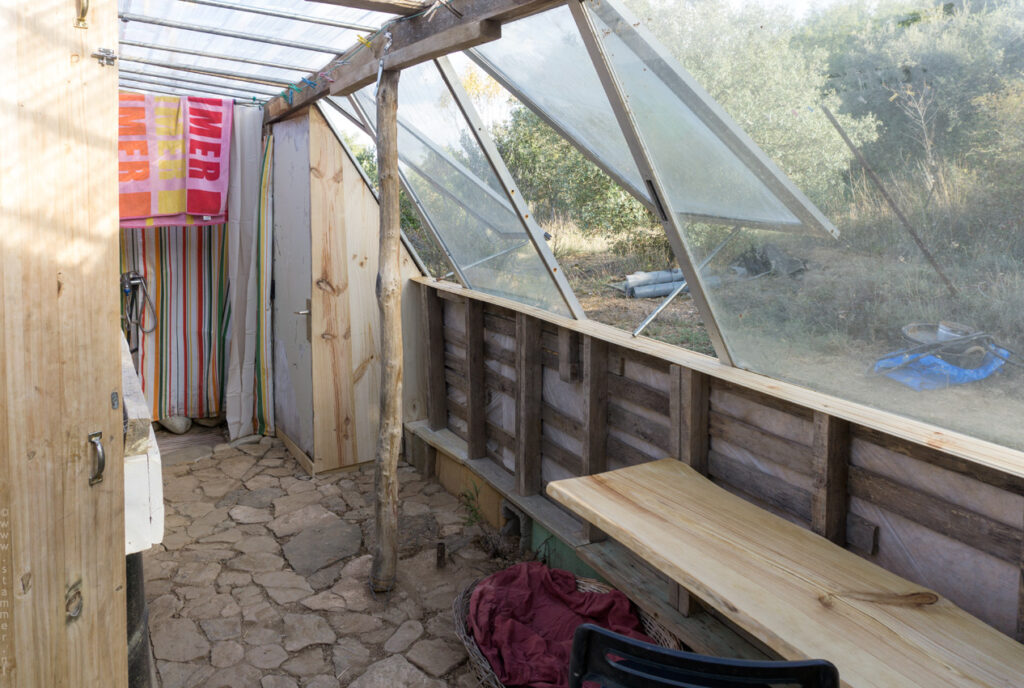
Thirteen years ago, I built a ´solar´ greenhouse with straw bales. It was to be a multi-functional space with a solar shower, vegetable beds and a DIY workbench. It was a kind of experiment and a test to what is possible with straw bales, using the bales that were left over from the house building. As a test, it really worked out quite well, lasting more than a decade and if I had undertaken the foundations and the plastering a little bit more thoroughly, it would probably have been useful for another decade. Bit by bit rainwater and gnawing animals found their way through the plastering and straw, debilitating the building. A quite mysterious and inexplicable strong wind gust (or was it a local tornado?) blew half of the fibre roof away during my absence last summer and that was exactly the stimulus I needed to rebuild the greenhouse from the ground.
This time I decided not to use straw bales again. The extraordinary insulating qualities of straw are quite overridden by the very poor insulating qualities of the transparent fibre roof and the many windows. Instead I was curious about the possibilities of using wooden pallets in combination with metal mesh, adobe and (geo-textile) cloth. Pallets can be obtained for free anywhere and the soil I live on contains excellent clay for adobe ( a mix of sand, clay and straw).
Continue reading











